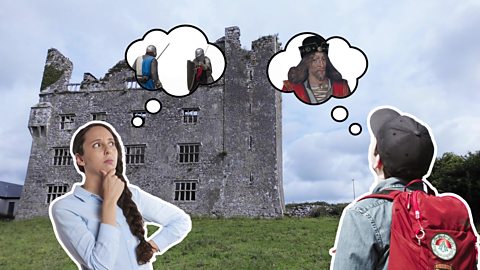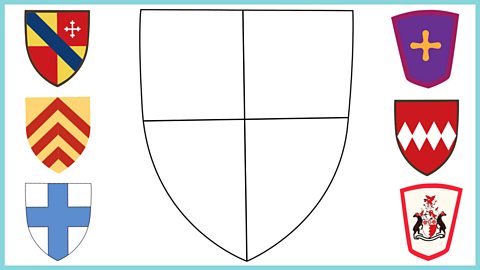Clans and castles were a huge part of life in Scotland from around 1100 until 1746 AD, when the Jacobite rebellion came to an end.
In this article you can find out:
- What a Scottish clan is
- What life was like inside a clan castle
This resource is suitable for Castles topics for P2, P3, P4, P5, P6 and P7 (First and Second Level Curriculum for Excellence).
Find out what life was like in a Scottish clan castle.
NARRATOR For 650 years, from 1100 to 1746, powerful families called clans controlled different parts of Scotland.
Each clan had a Clan Chief and to keep safe, they built stone castles like ones found at Blair, Dunnottar, and Eilean Donan.
Fighting between clans happened a lot so clan castles always needed to be ready for an attack.
This one is by the sea and helps keep the clan’s boats safe when dropping off and loading cargo, such as food.
The high stone walls make it hard to attack.
And at the castle entrance, there’s a drawbridge to be pulled up at the first sign of trouble.
Inside, the castle provides some comfort, with a grand entrance hall and a warm fire, decorated with this clan’s coat of arms. Every clan had one.
There was a dungeon where prisoners could be locked up.
There were also cellars for storing food.
Unlike your house, there were no flushing toilets in a castle. Everyone’s stinky stuff fell into the moat. Yuck!
GUARD Eugh!
NARRATOR The cook in the kitchen was always hard at work.
Food was served in the Great Hall upstairs where the Chief and his family or guests might eat roasted chicken, been, or duck.
CHIEF Mmm-mmm.
NARRATOR Along the corridor was the Chief’s quarters where he slept.
Above this, there were battlements where guards tried to stay awake.
ATTACKER Attack! Attack!
NARRATOR And if there was an attack, the Clan Chief often had a secret way out of the castle.
This allowed him to lead a brave charge against his attackers or run away to live to fight another day.
What is a Scottish clan?
- Scotland has around 500 clans with clan members living all around the world.
- A clan is like a family but they are not always related by blood.
- The word clan comes from the Scottish Gaelic word 'clann' which means 'children'.
- Clans give a group of people a sense of identity and shared history.
- Clans can sometimes be identified by a clan tartan or coat of arms (also known as a crest badge).
- Each clan has a clan chief, who is the head of the clan, and chieftains, who are heads of different branches of a clan.
- The clan seat was, and sometimes still is, the home of the chief. It is usually an ancient castle or a great house.
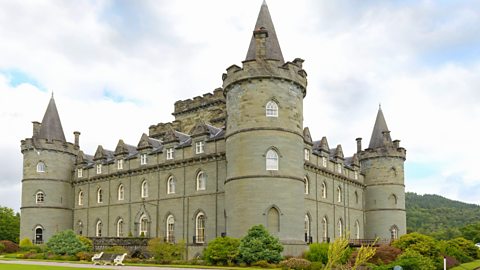
Image caption, Clan seat
Clans often have an official ancestral seat where the clan chief once lived or still lives. This is usually a castle or great house. Inverary Castle (above) is the seat of the Clan Campbell. As well as being a visitor attraction, Inveraray Castle is home to the Duke of Argyll and his family. (Jeffrey Banke / Alamy Stock Photo)

Image caption, Coat of arms
A coat of arms is a symbol for an important person or family. Many clans have coat of arms (or crest badges) with their clan mottos on them. This is the Clan Douglas coat of arms. It has been carved above the door of Drumlanrig Castle. (South West Images Scotland / Alamy Stock Photo)
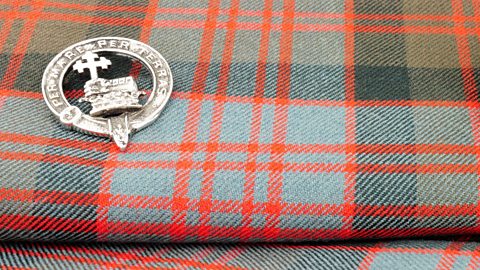
Image caption, Tartan
The first tartans were very simple patterns. The colours came from local plants like roots, berries and trees. These colourful tartans were worn by the people of the local area where they were made and became the area or clan tartan. This is one of the Clan Macdonald tartans. (Philip Kinsey / Alamy Stock Photo)
1 of 3
Examples of Scottish clans
Here are some of the most well-known clans in Scotland and their clan seatThe home of the clan chief. This is usually an ancient castle or a great house..
| Clan | Clan seat |
|---|---|
| Clan Campbell | Inveraray Castle |
| Clan Douglas | No official clan seat |
| Clan MacDonald | Finlaggan Castle |
| Clan Mackenzie | Castle Leod |
| Clan Mackintosh | Moy Hall |
| Clan MacLean | Duart Castle |
| Clan MacLeod | Dunvegan Castle |
| Clan Sinclair | Roslin Castle |
Kisimul Castle
In the video at the top of the page, we learned a lot about life inside a clan castle.
Kisimul Castle in Castlebay, Isle of Barra is the clan seatThe home of the clan chief. This is usually an ancient castle or a great house. of the chief of Clan MacNeil. Let's find out more.
With help from The LAB and Historic Environment Scotland, pupils from Castlebay and Eoligarry Primary Schools made this film about their local castle, Kisimul Castle.
Test your knowledge
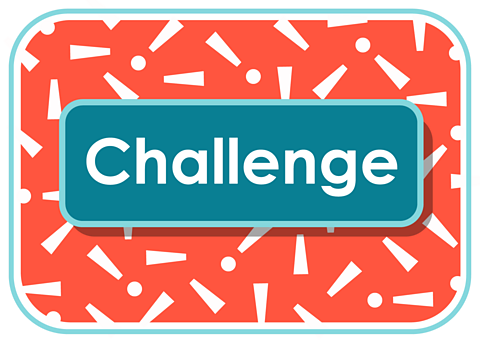
Design your own coat of arms
Many clans had a crest or a coat of arms. A coat of arms is a drawing that represents a person, family or organisation. In Scotland, the Lord Lyon King of Arms decides who gets a coat of arms.
Can you draw your own coat of arms? What symbolAn object or picture that stands for something else. would you use to represent your favourite things?
Explore more
Find out more about life in a clan castle.
What did people eat in castles?
Find out what food was available in Medieval times and how they kept it fresh.
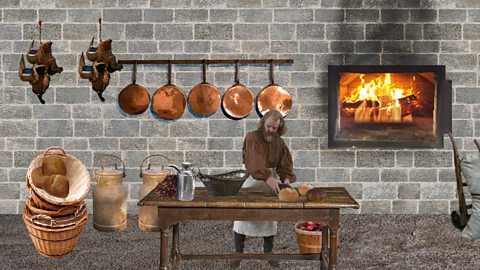
How did people stay clean and healthy in castles? listHow did people stay clean and healthy in castles?
Find out what health and hygiene was like in a medieval castle.
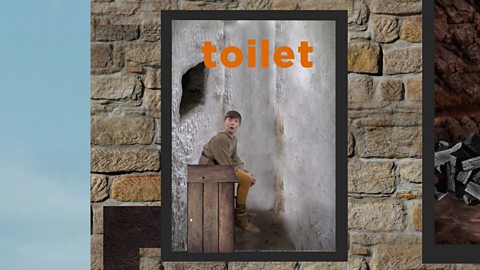
What was entertainment like in castles?
Find out about the different ways people had fun in and around castles.
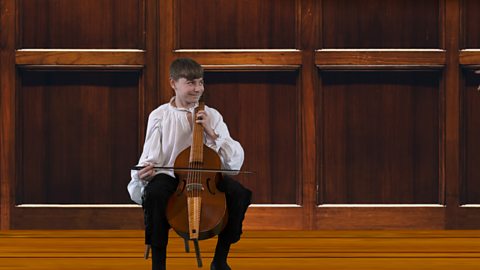
More on Castles
Find out more by working through a topic
- count9 of 16

- count10 of 16

- count11 of 16

- count12 of 16
